Suggestion for the W+ and Z particles.
The W particles could harbour one or two extra valence Electrons or Positrons to explain the recent so called Tevatron Bump showing more massive W particles.
out of the collision process with massless Higgs particles
Decay examples:
Muon decay.The Muon decaying compound “click-on” Particle (see
Below ) coded: (ORO,LOL,LOL). Is able to decay into
three single parts: ORO+LRL+LLL. (changing one LOL
into a LRL Particle (one hinge rotation over 90 degrees: R>L)
and one LOL into a LLL Particle (one hinge rotation over 90 degrees: O>L).
These particles are called: the Electron(ORO), the
anti-electro-neutrino (LRL) and the muonic neutrino
(LLL).
Kaon decay.For normal Kaon plus decay, the main decay routes
according to the literature are: (A: mu+, muonic
neutrino)or (B: pi+, pi0)
The Kaon + Particle is coded: for the
U-Quark:(OLO,ROR)and for the anti-S Quark:
(OLO,OLO,ROR).
For the A route: it is proposed that the u-Quark
(OLO,ROR)decays into (LLL,ROR) which Particle is
supposed to disintegrate and produce the (LLL) muonic
neutrino and one undetected Gluon (ROR) will disappear
into the Gluonic “sea”.
The anti-s-Quark (OLO,OLO,ROR)will change into a
positive muon (OLO,ROR,ROR).
For the B route: it is proposed that the U-Quark
(OLO,ROR) does not decay and that the anti-S Quark
also decays into (OLO,ROR,ROR) which is in combination
with the U-Quark a positive pion+ Particle.
The pion-0 Particle coded: U, anti-U Quark: (OLO,ROR),
and (ORO,LOL) are mirror symmetric and able to emerge
directly from the vacuum as so called pair production
results.
Rare Kaon–Plus decay.
A rare Kaon plus Particle decay: K+ => pi+, nu, nubar
, (pi + , neutrino anti-neutrino) is recently
discovered and now acknowledged by a Brookhaven AGS
experiment 949:see:
http://www.phy.bnl.gov/949/
Interestingly this rare Kaon decay can easily be
derived from the “Quatron Torus Particle” system
properties.
The most simple explanation by this Quatron Particle
click-on system is to assume that the decay is the
same as route B mentioned before and in addition that
the Pion 0 Particle (OLO,ROR)+(ORO,LOL) decays into
two neutrinos.(OLO)=>(RLR) and (ORO)=> (LRL). The
(ROR) and (LOL) Gluons are supposed to “disappear into
the Gluonic “sea” as described above under route A.
Kaon Long/ Short decay.
It is proposed that the Kaon and anti Kaon Particles
(ds)are mixing with themselves and with the Eta (ss)
Particle by the continuous changing of one Gluon into
a Lepton to change the d Quark into an s Quark and
backwards a Lepton into a Gluon from s into a Quark.
(d<=> s)
At the same time it is proposed that the backward
changing d into s last longer due to the slight
chirality of the vacuum .
The angle of attack of the Tandem oscillating Higgs
Particles to the Quarks, must be slightly different.
This is reason to propose that it is the S, anti-S
(Eta Particle) that is the reason for the strange Kaon
decay time-differences
Explanation: the Kaon 0 Particle coded as: d-Quark:
(ORO,LOL,LOL) anti-s Quark: (OLO,OLO,ROR)
will change into an Eta (s) Particle: s Quark:
(ORO,ORO,LOL) anti-s Quark: (OLO, OLO, ROR) by the
Direct Weak attack mechanism of the tandem vacuum
Particles to change three hinges of one compound
Particle at once (OLO <=> ROR, or ORO <=>LOL).
Then after a while, the intermediate (s anti-s) Eta
Particle will be changed into the
anti-Kano-0, coded: S: (ORO,ORO,LOL) anti-D:
(OLO,ROR,ROR,)
Thus it is assumed that the origin of this strange
Long and Short Kaon decay mechanism is to find in the
difference in transition speed for the LOL Gluon into
the ORO Electron (needed to change the d Quark into an
s Quark) which is supposed to be faster due to the
chirality of the vacuum than the transition speed to
change the OLO Positron into the ROR Gluon (needed to
change the anti-s Quark into an anti d Quark, to
produce the anti Kaon-0 Particle).
Special Weak Interactions:
The “Direct Weak attack mechanism by the tandem oscillating vacuum
Particles” or "two Higgs doublets".
Special Weak interactions are supposed to change all
three Hinges at once without the aid of the
Z-Particle, such as in Kaon 0,- Eta mixing processes
(OLO<=>ROR or ORO<=>LOL described below).
Glueballs.
( for latest Glueball information see also;
http://arxiv.org/PS_cache/hep-ph/pdf/0209/0209339.pdf )
The shape of some Gluons makes it possible to suggest
that these Particles are able to “click-on” to each
other WITHOUT THE AID OF ELECTRON or POSITRONS
and form so called Glueballs, found already 20
years ago in collider experiments.
Model experiments are pointing into the direction of
10x “bound state, click-on” possibilities for two
Gluon Glueballs and also 8x Exotic “bound state,
click-on” possibilities of Gluons with single Leptons
(ORO and OLO).
10 different Knots with 2xGluon Bound States:
UOU+ROR, UOU+LOL.
UOU+LOU, UOU+ROU.
LOU+ROU 2x because there is also a second mirror
image possible.
ROR+LOU, ROR+ROU.
LOL+LOU, LOL+ROU.
8x different Exotic Knots with Gluon-Lepton Bound
States.
OLO+LOU, OLO+ROU.
OLO+LOL, OLO+UOU.
ORO+LOU, ORO+ROU,
ORO+ROR, ORO+UOU.
For comparison, see: 17 masses at
http://arxiv.org/PS_cache/hep-ph/pdf/0209/0209339.pdf
Page 11 figure 1, comparison between the Glueball
spectrum and Knot energies.
By: R. Buney.
2x different Knots with 3x Gluon bound states:
3x ROU or 3x LOU.
1x Knot with 4x Gluon bound states:
4x UOU.
This new description of elementary Particles, is based
on the idea that Quarks are not single Particles but
compound Particles (bound states) and able to be
created out of the Higgs vacuum at once as Particle
anti-Particle (Quark) pairs, just like an Electron
Positron pair and able to decay into smaller parts.
(see Page 1)
Kitchen Table Models.
Based on real “kitchen table” model binding
experiments, it is proposed that the 36 different
Quarks of the “Standard model” are composed out of
one, two or three Electrons, or Positrons and one or
two Gluons, both kept together inside the Quark, by
the special shape which these Quatron Particles should have.
All these forms are supposed to be derived by real
shape transformation out of only one Particle, called
the Higgs “Quatron” Particle which should have a
special Torus form.
The Torus form is supposed to be equally divided into
FOUR rigid quarter parts, (like “Macaroni” tubes) each
able to rotate axial relative to the neighbouring
Macaroni tubes and change the shape of the original
Quatron Torus into more complex shapes.
It is assumed that the unification of Particles is
based on a simple 90 degree axial “cutting-edge
rotation” of the four quarters of the Quatron Torus
form.
This Toy system seems to be surprisingly a simple aid
to mimic shapes for elementary Particles, exotic
Particles like Glueballs and sub-quantum decay
processes.
Quatron ( macaroni) Particle model description.
If we imagine a rubber Torus shaped Sealing Ring (say
about 4 cm diameter and a thickness to ring diameter
ratio of about 1: 7) which we cut in two halves, then
we are able to make simple propeller forms out of it,
with two different so called “Pitches”.
We are able to make propeller forms with a left handed
Pitch, or with a right handed Pitch.
We can do so, by gluing the two halves together again
after rotation of one half of the Torus over 90
degrees (left or right rotated), at one of the two
cutting edges. (see page 2, 4,5 and 6)
At the same time, for more complex Particles we need
to cut the Torus into 4 equal quarters ( macaroni
parts), connected to each other by so called “Hinges”,
which are proposed to be able to rotate axial in steps
of 90 degrees.
For each Particle , there has to be only three Hinges
which are coded by the mutual rotational displacement
possibilities: O(=unchanged circle) ,U (=180 degree
rotation), L (=90 degree Left hand rotation) and R
(=90 degree Right hand rotation).
As a consequence, the most simple Particle shapes are
the two “Pitched Propeller forms” described before,
coded ORO and OLO., which we will call arbitrarily the
Electron respectively the Positron.
As an other consequence, the Particle with three
unchanged hinges is coded: (OOO), which is chosen to
be the Higgs-Particle.
A Particle with all three hinges with 90 degrees
rotation to the Right relative to the neighbouring
quarter part, is called (RRR) for three hinges with 90
degrees rotation left it is coded: (LLL) .
The Particle with three hinges rotated over 180
degrees is coded: (UUU).
However not all possible shapes are needed to mimic
the standard model, so Particles with a middle hinge
coded U : (XUX) are not used. The only Particles with
U coded hinges are: UOU ULU URU LOU and ROU. (UOR and
UOL are the same Particles as respectively ROU and
LOU.)
Mechanistic particle transformation.
THE RING SHAPED Higgs Particles coded(OOO) are
supposed to oscillate in Tandem
along so called linear Vacuum Lattices, two by two in
opposite directions, as the symmetrical opposite
pistons of a boxer engine, as the origin of all
energy, spin and mass effects.
This enables the Tandem Higgs Particles (doublets) to change the
form of their own Torus into an Electron and Positron
pair at the same time and to originate all other
oscillations and interactions, as d <=>s and c<=> b .
It is proposed that Photon radiation is the result of
mechanical change by collisions between Single Higgs
Particles and Quarks or Leptons.
There are 6 different shapes for Photons and 5 of them
are supposed to act also as Gluons, because they are
able to ”click –on” to a Positron or Electron and form
Quarks, Muons or Tau Particles.
Weak interaction: The two-Higgs doublets in collision with the Quark
connected Gluons, are supposed to be able to change the symmetrical
shape of three sorts of Gluons (UOU,ROR and LOL) into
Neutrinos, respectively URU,ULU,RRR,RLR,LRL,LLL).
Z-Particles are so called Positroniums (compound
Electron and Positron) able to catch neutrinos and
form a compound temporary W Particle, which seem to be needed to
be able to reshape the Neutrino into a Positron or
Electron or even backwards.
As an example, in Neutron decay, the LOL (d-Quark:
ORO+LOL+LOL) Gluon changes via a Muonic Neutrino LLL
into a Positron OLO (u-Quark: OLO+ROR).(see page 3)
With this Higgs system, it is supposed that Higgs
Particles are able to transfer Photonic geometrical
information at a linear average speed of 7/4 the speed
of Light. The expected transfer retardation at the
vortexes of the Chiral Tetrahedron vacuum Lattice is
included. This should enable the vacuum to mimic the
isotropy of the speed of light.
See:
http://home.planet.nl/~vuyk0022/ see: “the Local
Anti-Symmetrical Oscillating vacuum Frame” (LASOF)
Summary of the single shaped Particles.
The two simple propeller shaped Particles are coded:
ORO: the Electron.
OLO: the Positron.
Gluons.There are in contrast with the standard model only 5
Gluons needed to satisfy the standard model colour
differences of Quarks.
The Gluons are all 5 able to “click on to the Electron
or Positron and form a compound Particles needed for
all Quarks the Muon and Tau Particle .
They are coded:
UOU, ROR, LOL, LOU, ROU.
Photons.There are in contrast with the standard model : 6
different shapes for (Monopole) Photons, 5 of them
have the same shape as the Gluons mentioned before,
they are: .
UOU= Photon for visible and IR light.
ROR= electric + Photon
LOL= electric – Photon
LOU= magnetic South Photon
ROU= magnetic North Photon
………………………………..
The Graviton ROL (or LOR)= is expected to be the
Photon without “click-on” possibilities.
Because of the frequency overlap of gamma and x-ray
radiation it could be possible that this radiation is
not based on the so called General Photon UOU, but
should be coded differently as LOO and ROO.
In that case there are 8 Photons in stead of 6.
Neutrinos.Neutrinos are supposed to be NOT able to “click-on”
with compound fermions as Gluons do.
In contrast Neutrinos are supposed to be originated as
collision products out of the shape of one of the 5
Gluons or Electron or Positron by the standard Weak
Z-Particle operation
Neutrinos with codes and origin Particles:
RRR: the anti-muon-neutrino. Possible origin
Particles: ROR, ORO
LLL: the muon-neutrino. LOL, OLO
RLR: the electro-neutrino. ROR, OLO
LRL: the anti-electro-neutrino. LOL, ORO
URU: the Tau-neutrino. UOU.
ULU: the anti-Tau-neutrino. UOU.
.
The Z-Particle.The Z-Particle is supposed to be a very loose
“click-on” compound combination of an Electron (ORO)
and a Positron (OLO).
The W-Particle is not assumed to exist as a single
Particle, it is assumed to be a Particle changing
process, in combination with the “aiding” Z-Particle.
The Z Particle is supposed to be a help by form
changing processes of Standard Weak interactions
(described above).
Quark generations.
The three different coloured Up-Quarks are coded:
ORO+LOL, or ORO+LOU, or ORO+UOU. (2 compound
Particles)
Anti-Up-Quarks (three colours) are coded:
OLO+ROR, or OLO+ROU, or OLO+UOU. (2 compound
Particles)
Down-Quarks (three colours) are coded:
ORO+2.LOL, or ORO+2.LOU, or ORO+2.UOU. (3 compound
Particles)
anti-Down-Quarks (three colours) are coded:
OLO+2.ROR, or OLO+2.ROU, or OLO+2.UOU. (3 compound
Particles)
The three different coloured Strange-Quarks are coded:
2.ORO+LOL, 2.ORO+LOU, or 2.ORO+UOU. (3 compound
Particles)
Anti-Strange-Quarks (three colours) are coded:
2. OLO+ROR, 2.OLO+ROU, or 2.OLO+UOU. (3 compound
Particles .
Charm-Quarks (three colours) are coded:
2.ORO+2.LOL, 2.ORO+2.LOU, or 2.ORO+2.UOU. (4 compound
Particles)
anti-Charm-Quarks (three colours) are coded:
2.OLO+2.ROR, 2.OLO+2.ROU, or 2.OLO+2.UOU. (4 compound
Particles)
The three different coloured Bottom-Quarks are coded:
3.ORO+LOL, 3.ORO+LOU, or 3.ORO+UOU. (4 compound
Particles)
Anti-Bottom-Quarks (three colours) are coded:
3. OLO+ROR, 3.OLO+ROU, or 3.OLO+UOU. (4 compound
Particles)
Top-Quarks (three colours) are coded:
3.ORO+2.LOL, 3.ORO+2.LOU, or 3.ORO+2.UOU. (5 compound
Particles)
anti-Top-Quarks (three colours) are coded:
3.OLO+2.ROR, 3.OLO+2.ROU, or 3.OLO+2.UOU. (5 compound
Particles)
Compound Leptons:Muon Particles are coded: mu+: OLO+2ORO,
(=anti-d-Quark) mu-: ORO+2.LOL.(=d-Quark)
Tau Particles are coded: tau+: 2.OLO+2UOU, (=c-Quark).
tau-: 2ORO+2UOU.(=anti-c-Quark)
Counting Particles.We count: 6 Photons (Gluons included) , 6 single
neutrinos, 2 single leptons and one single
Higgs-Particle= 17 single Particles. +36 compound
Quarks and one compound Z Particle = 54 different
formed functional Particles if we exclude exotic
Particles like Glueballs etc.(see below)
MATTER CREATION AND THE CHIRAL VACUUM.
A new reason for a dual-symmetrical smooth evaporation
of multiple anti-mirror universes in an alternative
Big Bang process, is based on the new system for
elementary Particles, described before and the
chirality of the Higgs-Particle based vacuum .
The chirality of the vacuum , should be responsible,
for our material universe, because it is assumed that
anti-matter is less stable than matter within the
moment of creation in a chiral oscillating vacuum after the
“semi-cold Higgs particles evaporating Big Bang”.
Thus Matter in our universe, is supposed to be created
without annihilation processes, direct out of the evaporated
vacuum Higgs-Particles.
At a result, the chirality of the vacuum should be
responsible for the origin of strange CP violations
found in the so called Kaon- O Short and Long decay.
More details at :
http://home.planet.nl/~vuyk0022/
Leo Vuyk.




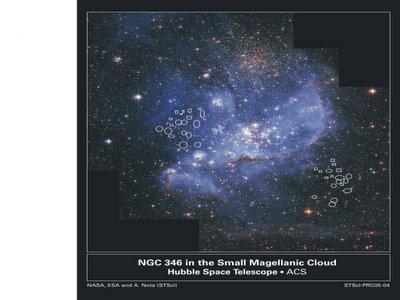



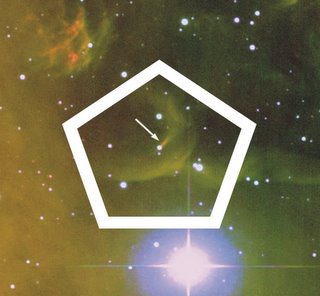



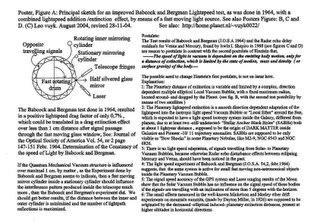

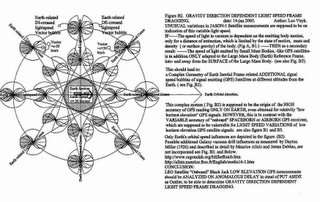
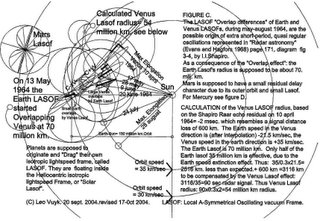
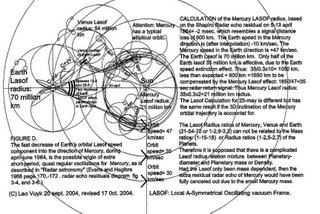




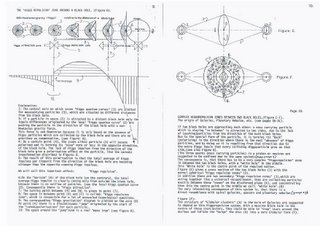
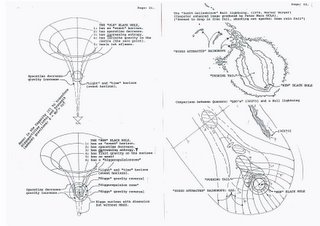
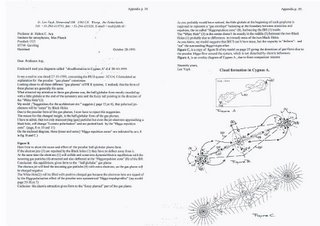



.jpg)
.jpg)
.jpg)
.jpg)


















